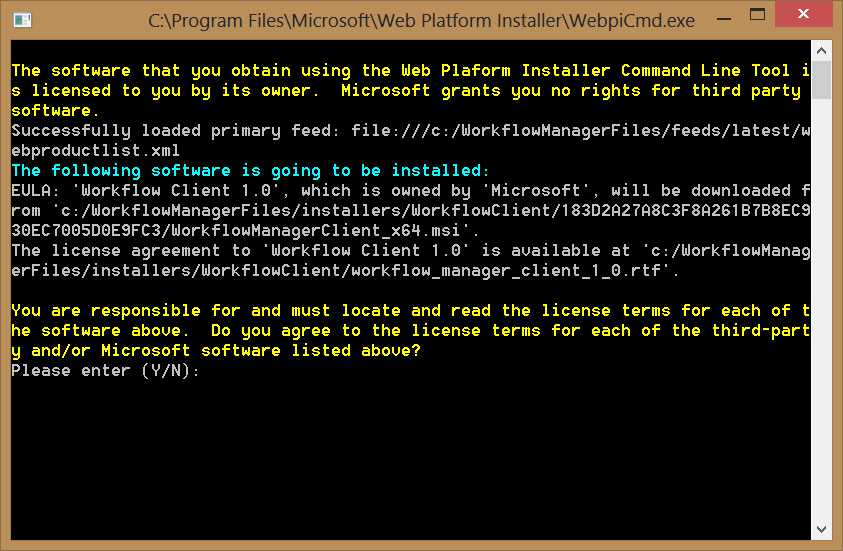Who would do such a thing?
If you’re ever in your IIS manger and notice that there is a workflow manager farm running on your production SharePoint farm, or if you just ran appwiz.cpl and are just looking at installed programs and happen to notice a workflow manager, a service bus, and or a workflow manager client, you probably need to get that thing off your farm and onto its own hardware! You definitely need to get the management farm off, if you’ve seen this in IIS manager, or are noticing the service bus and the workflow manager!!!

You also don’t want those workflow databases living on your SharePoint SQL instance. Give them their own instance, or better yet, their own database server\vm.
Before you remove the farm, you should run up a workflow management farm. Note: you can either have a farm with two servers, or four (these numbers include the database server). There is a quorum for the workflow management farm nodes at 3, or you can just run one front end with one back end. You can run two servers, plus one back end, but you won’t get any bang for this, so is better to either have one front end and one back end, or three front ends and you back end(s).
So what do I do now?
If you’ve noticed that some highly paid consultant has erroneously installed workflow management onto your SharePoint farm. You need to remove the management service and the clients, then just run the clients on your SharePoint Farm. Do this, after you create the new workflow management farm.
Create the workflow management farm, using the auto generated cert and then export this cert from the WF farm front end server and import it to the trusted root authority store on your front end SharePoint boxes.
Now that you workflow farm is installed on its own hardware, you’re almost ready to connect it to SharePoint. First you need to rid all that pesky references from your farm, for that incorrectly installed farm! Use appwiz.cpl to remove the service bus 1.0, workflow management client, and workflow manager. Then once they’re removed, install the workflow management client using the windows platform installer. And, finally, connect your new farm to your SharePoint farm.
Here’s the first in a really good series of posts on how to install Workflow manager, by Spencer Harbar. http://www.harbar.net/articles/wfm1.aspx





You must be logged in to post a comment.